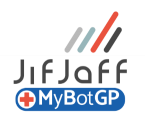JifJaff Nine Pillars of Automation – Pillar Four: RPA Documentation Framework
Robotic Process Automation (RPA) is a technology that employs computer software equipped with bots to perform tasks by emulating human actions. Primarily used for executing repetitive, predictable, and high-volume activities, RPA works by capturing data, interpreting responses, and communicating with other devices in an organised and systematic manner.
A successful Intelligent Automation implementation begins by finding the right processes within your business that can benefit from RPA. Capturing accurate processes requirements from an operational perspective whilst ensuring solution documentation covers both functional and technical aspects are critical to successful Automation delivery.
Best practise RPA Documentation Framework provides structure, standardisation, governance, and accountability to ensure all aspects of the process are covered and thereby stakeholder expectations aligned on project deliverables. This will ensure your internal RPA COE team adhere to Automation Best Practise principles right across the JifJaff Nine Pillars. The JifJaff Nine Pillars of Automation provide the foundation, scalability, training, approach, structure & governance to deliver RPA internally through a robust framework. This approach provides a clear line of sight crucial to achieving business benefits, ROI and thereby tackling common RPA scalability challenges.
An optimised RPA project delivery approach ensures alignment across Business SME’s, Management & Project Team members which is crucial for successful RPA delivery. It is imperative all stakeholders are aligned on scope, timelines, roles and responsibilities, process objectives and expectations.
Optimised documentation protects all stakeholders to ensure Automation build is based on an agreed scope with clear communication channels and accountability. A proven structured approach results in reduced defects and avoidance of process re-design which can often delay and more importantly jeopardise Go-live.
Pillar 4 of the JifJaff 9 Pillar program provides structured document templates:
• RPA Process Assessment Criteria Document
• RPA Business Case Realisation Document
• RPA Keystroke Design Document
• Functional Automation Design Document
• Technical Process Design Instruction Document
RPA Process Assessment Criteria Document:
Process use case identification and scoring to rank processes suitable for automation. The correct criteria and guidelines to help determine the suitability of a business process and prioritise these processes on metrics and operational rating. Using specific criteria to rank processes is fundamental to optimise the process pipeline.
For example, Automation potential based on the technical suitability i.e. what percentage of the overall task/process can be automated (higher percentage the better). Or how complex is the process to automate, are there a large number of systems involved, decision points, process steps and exceptions.
It is also extremely important to quantify tangible (and intangible) benefits i.e. which processes yield the most benefits and return on investment (ROI). This measure is dependent on the clients driving factor(s) for automating i.e. FTE impact, increased straight-through processing, reduced errors, improved reporting and/or scalability.
RPA Business Case Realisation Document:
Creating a business case for robotic process automation (RPA) or any intelligent automation tool is often one of the most difficult, yet important, steps to embark on a successful RPA journey. The key is to assess the total cost of ownership of an RPA program and compare it against all benefits of RPA implementation.
RPA Keystroke Design Document:
This document outlines the granular employee keystrokes (process steps) of the process in scope for automation. It is imperative to record each step input, output, exception, applications in scope, dependencies, offline calculations, field dropdowns, team variations, system nuances and decision logic. It is important the RPA lead performs a business playback of the granular steps the Bot will replicate and ensure it is signed off before development. In summary, this document articulates the end to end process steps, decision logic and calculations the Bot will mimic as per the manual steps carried out by the team member.
Functional Automation Design Document:
The documentation typically describes the functional attributes the Automation solution will need to consider as part of the overall solution design based on the basic business requirements. It is essential to give a visual overview of the process to aid understanding. They also give the Business & RPA team the structure of the process, meaning the structure on how to develop the robot.
It is important to document the process footprint and sequence of steps for the current manual (as-is) process as well as the automated (to-be) process, and the various exceptions, conditions and rules of the business process to be automated. The automation solution can often result in a very different way the process is executed, delivered, and maintained. It is important to document this delta from the perspective of SOP (standard operating procedure), change management and SLA’s with escalation paths clearly defined. It is vital the handshake between Bots and employees are clearly articulated.
Technical Process Design Instruction Document:
A Technical Process Design Document (PDD) is a document that captures the Bot pre-requisites, Input/Outputs, logical component triggers, Automation framework and Asset design. Its important to capture the detailed configuration, workflows, sub-workflows to assist for any KT session and to help resolve issue post go-live.
